|
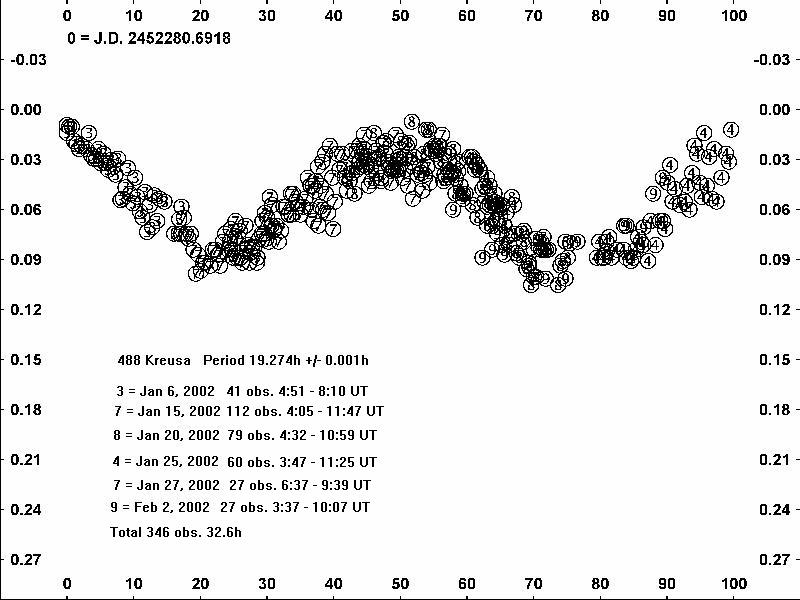
488 Kreusa is a C class asteroid 150.12 Km. in diameter, H = 7.81 and albiedo of .0589.
In 1989 A. W. Harris estimated that the period of 488 Kreusa was over 28 hours from his analysis of data collected in April 1980. From Harris, 1989:
"488 Kreusa. This asteroid was observed on only one night, for about 7.5 hr. During that time, it brightened monotonically by nearly 0.2 mag. Thus we infer a period at least four times as long as our light curve coverage and an amplitude at least as large as the observed variation. No other lightcurves have been published."
Wetterer attempted to estimate it in 1998 but simply noted it was "long". From Wetterer (1998):
"Asteroid 488 Kreusa was observed thirty times over a 5.5 hour interval (3.8 to 9.3 hours UT) on UT 97 May 13. Kreusa was observed to decrease by 0.1 magnitudes over the first 3.5 hours and then increase in brightness thereafter."
Blanco estimated it as 6.457 hours in 2000.
Since 488 Kreusa was in a very favorable opposition during the winter of 2002, I decided to initiate a multiple night campaign. The initial three nights plots out ok to a period of 29.1 hours with a significant gap in the curve and are posted in the figure at the top of the page.
The fourth night of data collected on January 25, 2002 yielded a more complete solution at a much shorter period of 19.30 hours. See the light curve posted below.
To do a comparison, the plot was forced to a period of 29 hours and the solution looks less favorable than before. See light curve shown at the bottom of the page.
Citations:
Harris, A.W., Young, J.W.: 1989, Icarus 81, 314-364.
Wetterer, C.J., Burns, M. S., Murphy, K. L.: 1998, Minor Planet Bul. 25, 19-20.
Blanco, C., Cigna, M., Riccioli, D.: 2000, Planet. Space Sci.48, 973-982 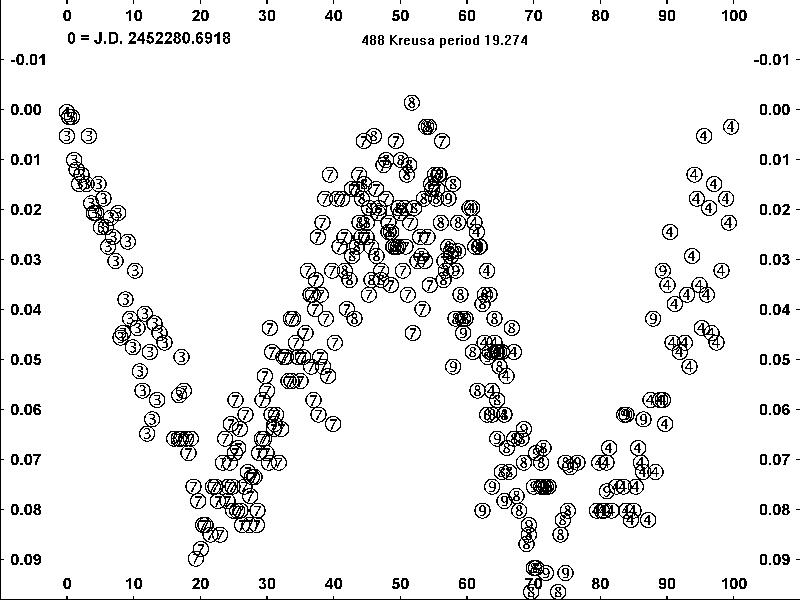
The same curve plotted with more spread. 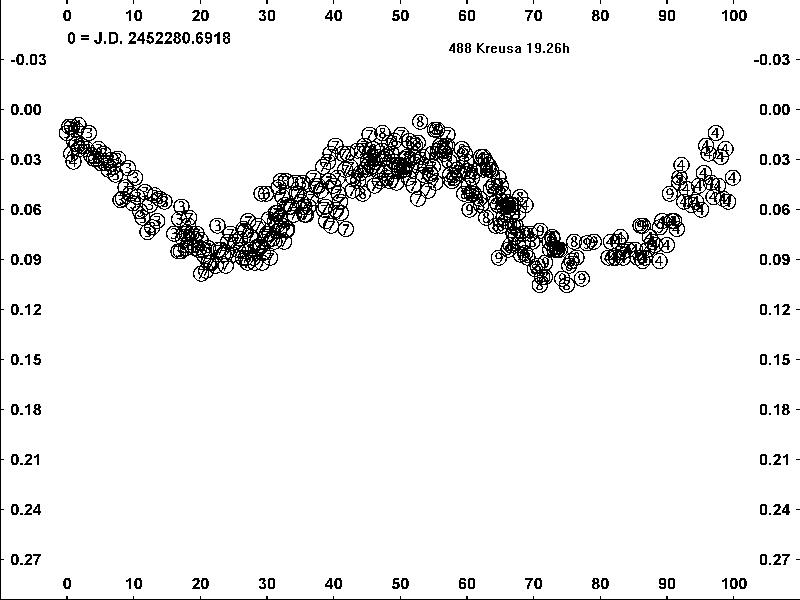
Another night of data (7 nights now) and the solution holds up well. 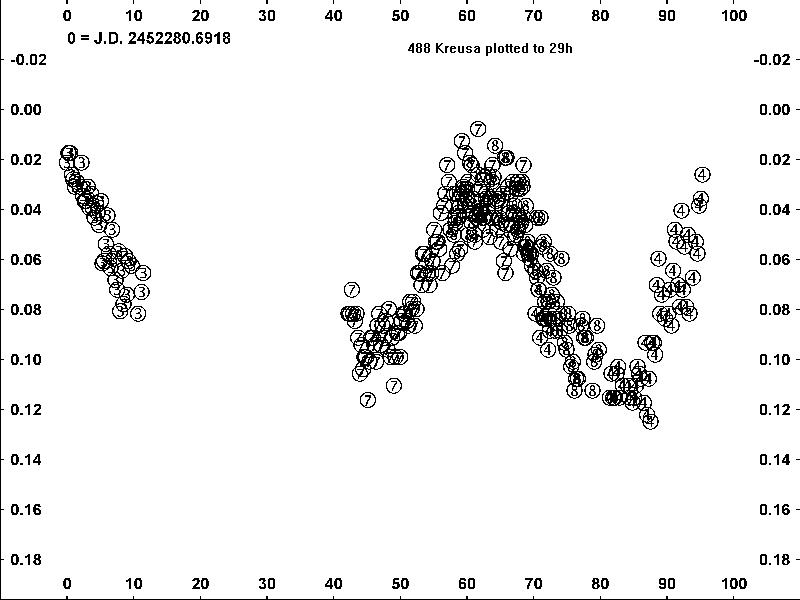
Six nights of data plotted to a 29 hour period. A big gap and obvious poor fit for all the data. 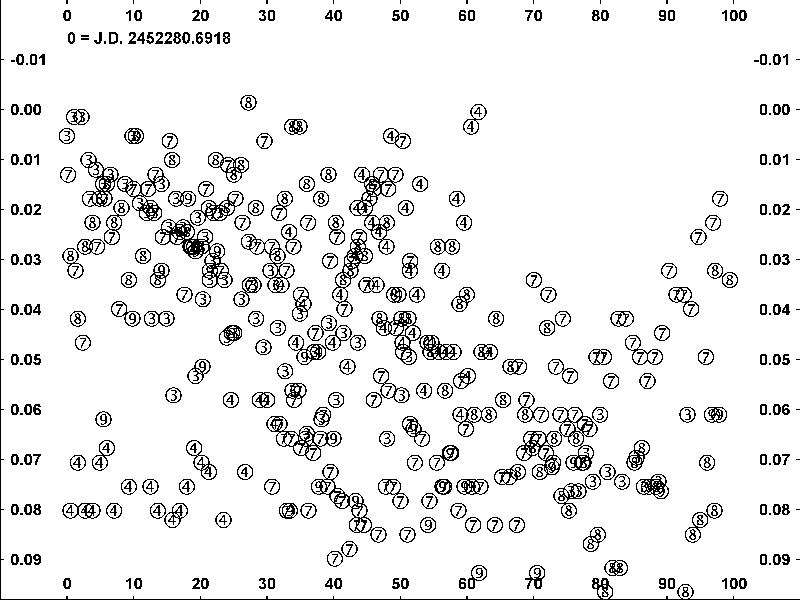
Seven nights of data plotted to 6.457 hours (Blanco's solution). There is absolutely no indication of fit here when sufficient data is considered. |